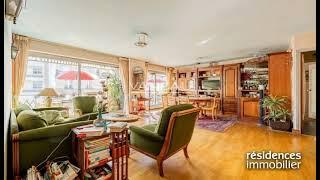Charlotte Perriand's architectural vision was a lifelong pursuit of harmony between humans, their environment, and the objects that define their lives. Her work transcended traditional architecture, from urban planning to a single chair, all driven by a singular philosophy: to create a better, more equitable way of living. She wasn't just a designer of spaces but a shaper of lifestyles, believing that well-designed surroundings could fundamentally improve human well-being.
If one were to ask Charlotte Perriand, "What is architecture?", her answer would be pragmatic and humanistic. She would state that architecture is the organization of life, a direct response to human needs and aspirations that seeks to create spaces for a healthier, more fulfilling existence. She would reject the idea of architecture as a purely aesthetic art form, arguing that its true value lay in its service to humanity. A building was successful only if it functioned with ease, promoted connection with nature, and provided comfort. The architect’s role was a collaborator, one who listened to daily rhythms and used design to facilitate them. For Perriand, architecture was the art of creating a human-centered environment, a seamless fusion of interior and exterior, where every detail contributes to a holistic and harmonious experience.
Perriand's designs are defined by their emphasis on flexibility, functionality, and a close connection to nature. She pioneered adaptable furniture systems and modular spaces that could be reconfigured for changing needs. Her interiors were open and multipurpose, breaking down rigid divisions and allowing for a more relaxed way of living.
Her use of materials was revolutionary. She combined industrial materials like tubular steel and aluminum with the natural beauty of wood and raw stone. Perriand had an uncanny ability to create a visual and sensory harmony between the technologically advanced and the organic. Her love for natural materials was inseparable from her desire to bring the outside in, using large windows and terraces to connect interiors to their surroundings.
A key principle of her work was the synthesis of different scales. She saw no fundamental difference between designing a chair, an apartment, or a large resort. Each scale was an opportunity to apply the same core principles of humanism and connection to the environment. This holistic approach, from object to space, was a central tenet of her practice.
Charlotte Perriand’s legacy is foundational to contemporary design. Her emphasis on human-centered design and flexibility is her most enduring contribution. Today, architects and designers routinely prioritize the user experience, creating adaptable, multipurpose spaces. The proliferation of modular furniture and open-plan living all owe a conceptual debt to her pioneering vision.
Her holistic approach to design across multiple scales continues to be a powerful model. Contemporary firms increasingly operate across disciplines, with a focus on a coherent design language from products to urban plans.
Perriand's innovative use of materials, blending industrial and natural textures, has had a lasting impact. The common practice of combining sleek, man-made materials with warm, natural ones is a direct lineage from her work. This principle of "truth to materials" is a bedrock of modern sustainable and biophilic design.
Her passion for connecting interiors to the natural world is more relevant than ever. Her use of large windows and the seamless flow from inside to outside was prescient, laying the groundwork for a more sustainable and psychologically nourishing form of architecture.
Finally, Perriand’s legacy as a pioneer for women in a male-dominated field is an inspiration. Her focus on user-centric, empathetic design continues to inspire a more inclusive and socially conscious approach to the profession. Her work is a testament to the power of a deep-seated belief that good design can genuinely improve people's lives.
==============================================================================
#Architecture, #ArchitecturalDesign, #Building Design, #ArchitectureInspiration, #ArchitecturalStyles, #ModernArchitecture, #HistoricArchitecture, #ArchitecturalPhotography, #UrbanDesign, #InteriorDesign, #SustainableArchitecture, #StructuralDesignm #ArchitecturalHistory, #ArchitecturalInnovation, #ArchitecturalVsualization, #HomeDesign, #ArchitecturalTheory, #ArchitecturalDrawings, #BuildingMaterials, #ArchitectureDocumenta,ries, #Architectural landmarks, #ArchitecturalInnovation, #ArchitecturalVisualization, #ArchitectureLovers, #Construction, #Cityscapes, #Skyscrapers, #alexandersszewczuk.blogspot.com,
If one were to ask Charlotte Perriand, "What is architecture?", her answer would be pragmatic and humanistic. She would state that architecture is the organization of life, a direct response to human needs and aspirations that seeks to create spaces for a healthier, more fulfilling existence. She would reject the idea of architecture as a purely aesthetic art form, arguing that its true value lay in its service to humanity. A building was successful only if it functioned with ease, promoted connection with nature, and provided comfort. The architect’s role was a collaborator, one who listened to daily rhythms and used design to facilitate them. For Perriand, architecture was the art of creating a human-centered environment, a seamless fusion of interior and exterior, where every detail contributes to a holistic and harmonious experience.
Perriand's designs are defined by their emphasis on flexibility, functionality, and a close connection to nature. She pioneered adaptable furniture systems and modular spaces that could be reconfigured for changing needs. Her interiors were open and multipurpose, breaking down rigid divisions and allowing for a more relaxed way of living.
Her use of materials was revolutionary. She combined industrial materials like tubular steel and aluminum with the natural beauty of wood and raw stone. Perriand had an uncanny ability to create a visual and sensory harmony between the technologically advanced and the organic. Her love for natural materials was inseparable from her desire to bring the outside in, using large windows and terraces to connect interiors to their surroundings.
A key principle of her work was the synthesis of different scales. She saw no fundamental difference between designing a chair, an apartment, or a large resort. Each scale was an opportunity to apply the same core principles of humanism and connection to the environment. This holistic approach, from object to space, was a central tenet of her practice.
Charlotte Perriand’s legacy is foundational to contemporary design. Her emphasis on human-centered design and flexibility is her most enduring contribution. Today, architects and designers routinely prioritize the user experience, creating adaptable, multipurpose spaces. The proliferation of modular furniture and open-plan living all owe a conceptual debt to her pioneering vision.
Her holistic approach to design across multiple scales continues to be a powerful model. Contemporary firms increasingly operate across disciplines, with a focus on a coherent design language from products to urban plans.
Perriand's innovative use of materials, blending industrial and natural textures, has had a lasting impact. The common practice of combining sleek, man-made materials with warm, natural ones is a direct lineage from her work. This principle of "truth to materials" is a bedrock of modern sustainable and biophilic design.
Her passion for connecting interiors to the natural world is more relevant than ever. Her use of large windows and the seamless flow from inside to outside was prescient, laying the groundwork for a more sustainable and psychologically nourishing form of architecture.
Finally, Perriand’s legacy as a pioneer for women in a male-dominated field is an inspiration. Her focus on user-centric, empathetic design continues to inspire a more inclusive and socially conscious approach to the profession. Her work is a testament to the power of a deep-seated belief that good design can genuinely improve people's lives.
==============================================================================
#Architecture, #ArchitecturalDesign, #Building Design, #ArchitectureInspiration, #ArchitecturalStyles, #ModernArchitecture, #HistoricArchitecture, #ArchitecturalPhotography, #UrbanDesign, #InteriorDesign, #SustainableArchitecture, #StructuralDesignm #ArchitecturalHistory, #ArchitecturalInnovation, #ArchitecturalVsualization, #HomeDesign, #ArchitecturalTheory, #ArchitecturalDrawings, #BuildingMaterials, #ArchitectureDocumenta,ries, #Architectural landmarks, #ArchitecturalInnovation, #ArchitecturalVisualization, #ArchitectureLovers, #Construction, #Cityscapes, #Skyscrapers, #alexandersszewczuk.blogspot.com,
- Catégories
- Architecte Architecte Intérieur - Décorateur
- Mots-clés
- Architecture, Architectural design, Building design


















Commentaires